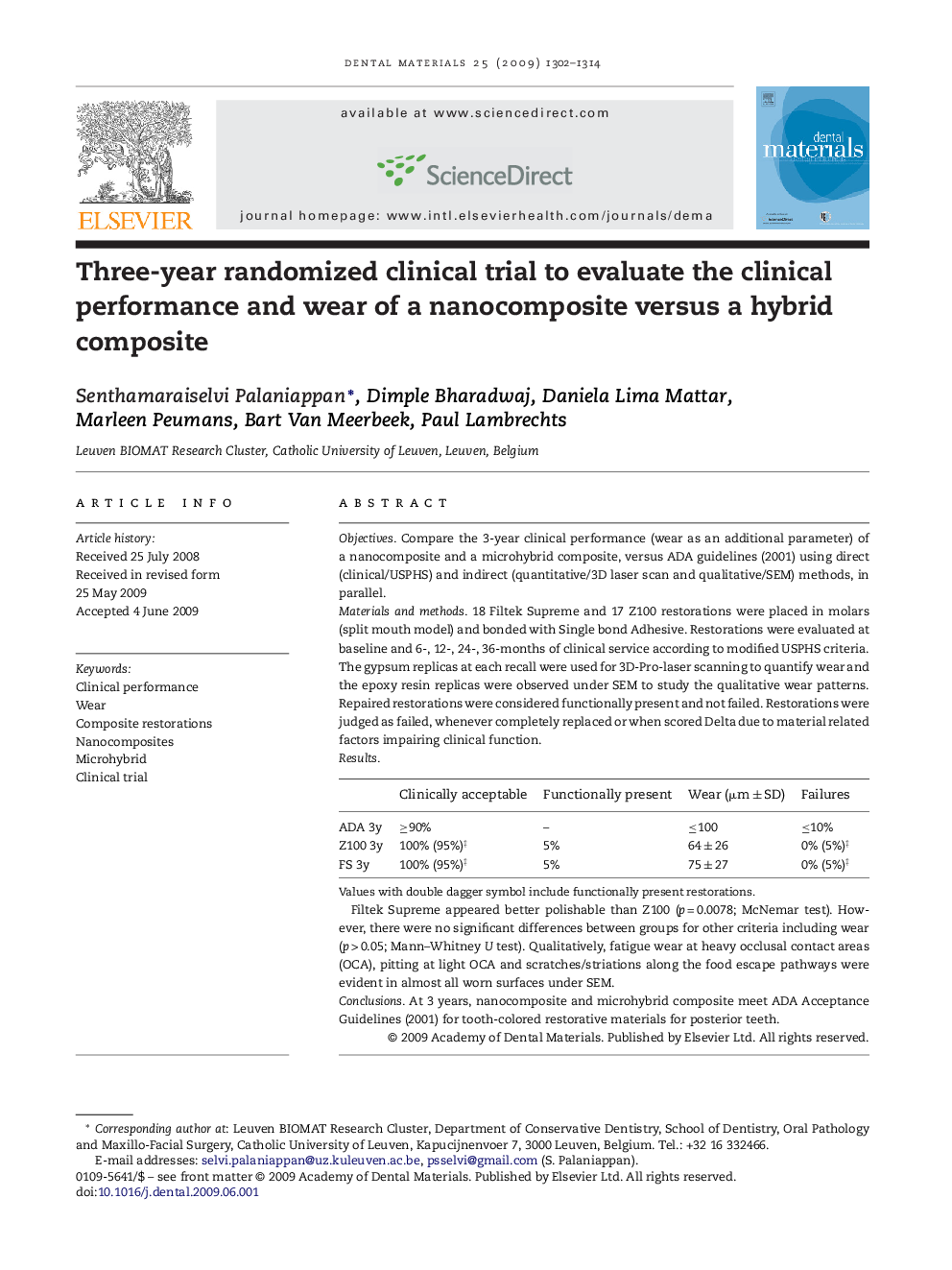| کد مقاله | کد نشریه | سال انتشار | مقاله انگلیسی | نسخه تمام متن |
|---|---|---|---|---|
| 1422930 | 986468 | 2009 | 13 صفحه PDF | دانلود رایگان |

ObjectivesCompare the 3-year clinical performance (wear as an additional parameter) of a nanocomposite and a microhybrid composite, versus ADA guidelines (2001) using direct (clinical/USPHS) and indirect (quantitative/3D laser scan and qualitative/SEM) methods, in parallel.Materials and methods18 Filtek Supreme and 17 Z100 restorations were placed in molars (split mouth model) and bonded with Single bond Adhesive. Restorations were evaluated at baseline and 6-, 12-, 24-, 36-months of clinical service according to modified USPHS criteria. The gypsum replicas at each recall were used for 3D-Pro-laser scanning to quantify wear and the epoxy resin replicas were observed under SEM to study the qualitative wear patterns. Repaired restorations were considered functionally present and not failed. Restorations were judged as failed, whenever completely replaced or when scored Delta due to material related factors impairing clinical function.ResultsClinically acceptableFunctionally presentWear (μm ± SD)FailuresADA 3y≥90%–≤100≤10%Z100 3y100% (95%)‡5%64 ± 260% (5%)‡FS 3y100% (95%)‡5%75 ± 270% (5%)‡Values with double dagger symbol include functionally present restorations.Full-size tableTable optionsView in workspaceDownload as CSVFiltek Supreme appeared better polishable than Z100 (p = 0.0078; McNemar test). However, there were no significant differences between groups for other criteria including wear (p > 0.05; Mann–Whitney U test). Qualitatively, fatigue wear at heavy occlusal contact areas (OCA), pitting at light OCA and scratches/striations along the food escape pathways were evident in almost all worn surfaces under SEM.ConclusionsAt 3 years, nanocomposite and microhybrid composite meet ADA Acceptance Guidelines (2001) for tooth-colored restorative materials for posterior teeth.
Journal: Dental Materials - Volume 25, Issue 11, November 2009, Pages 1302–1314